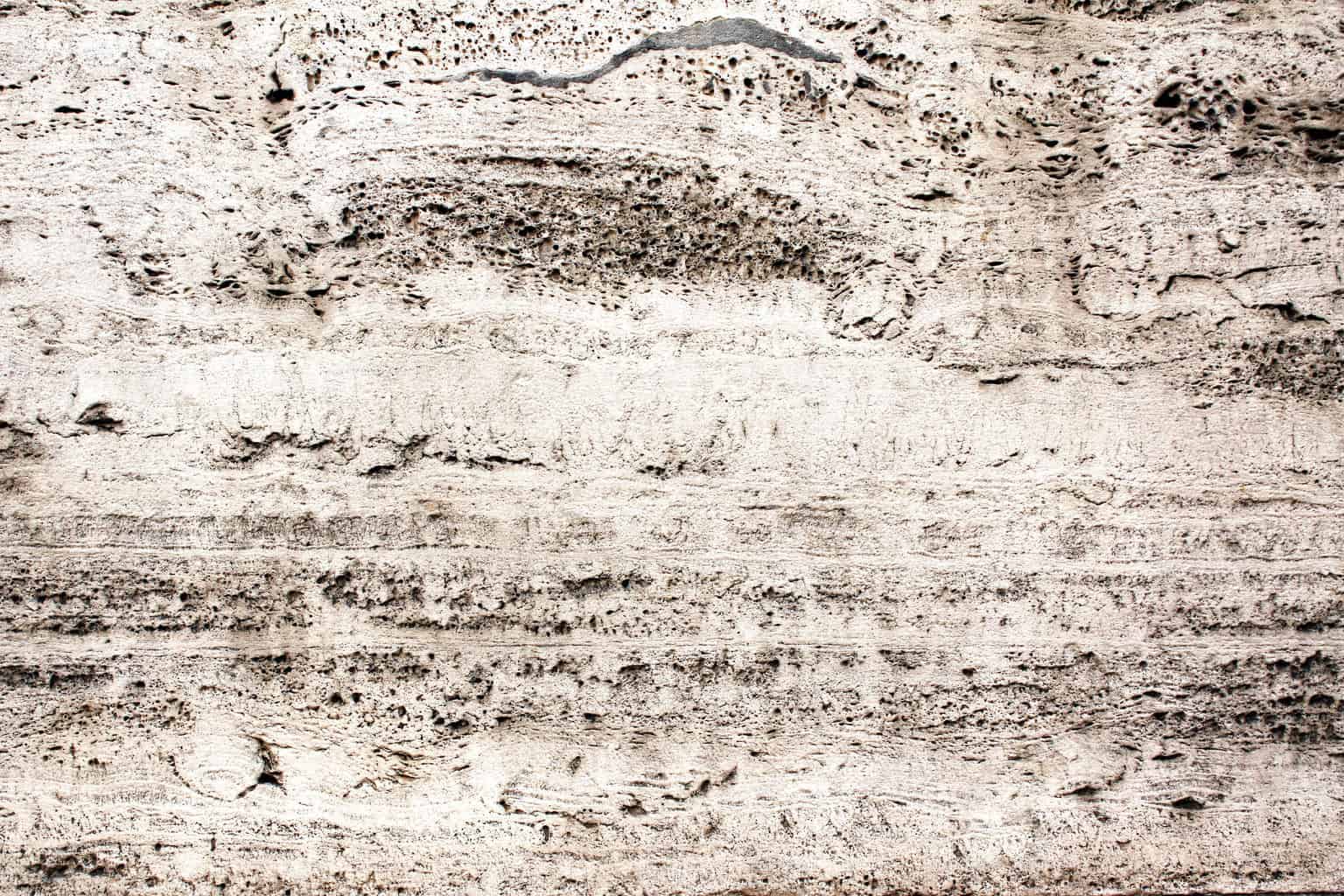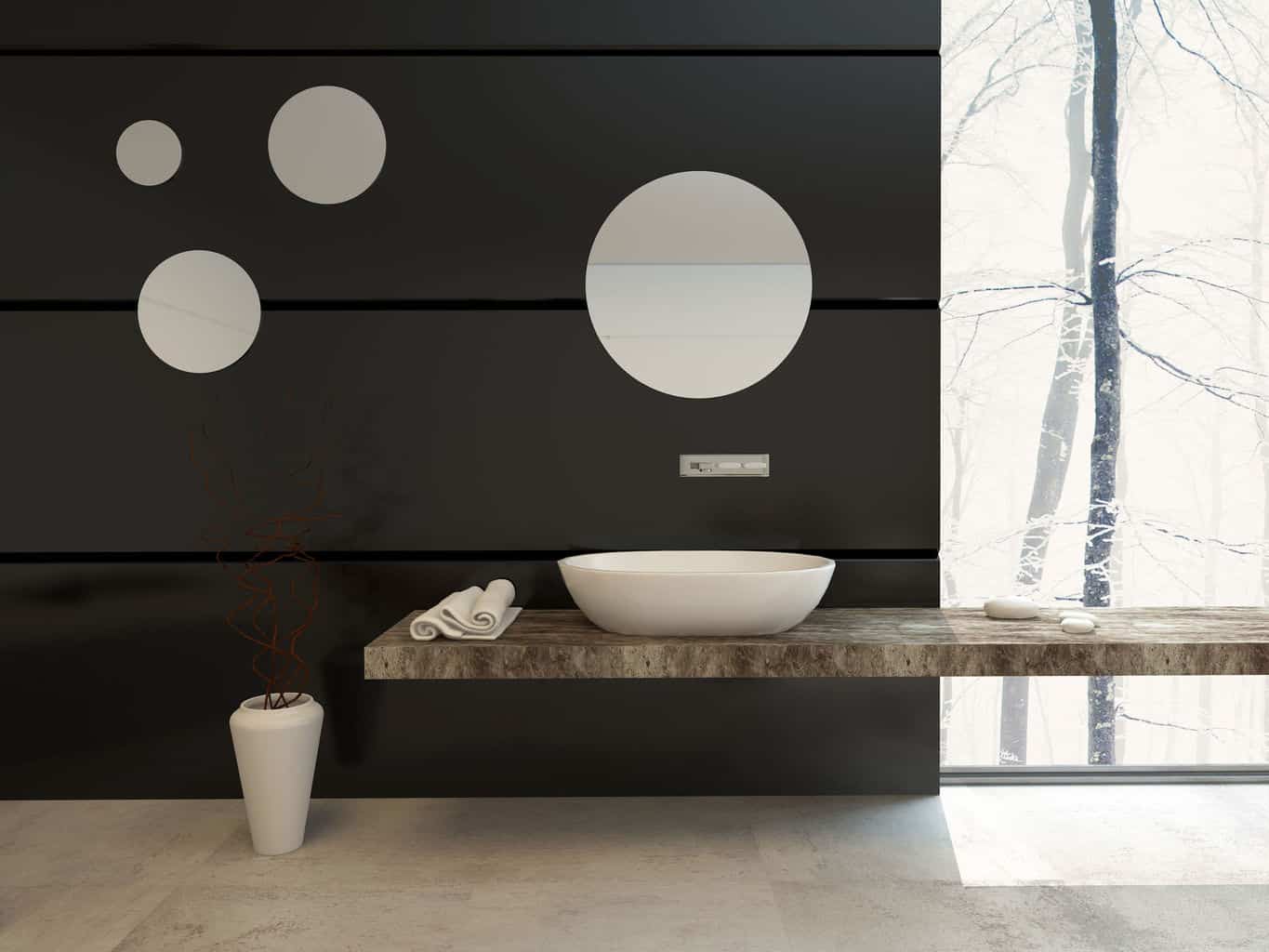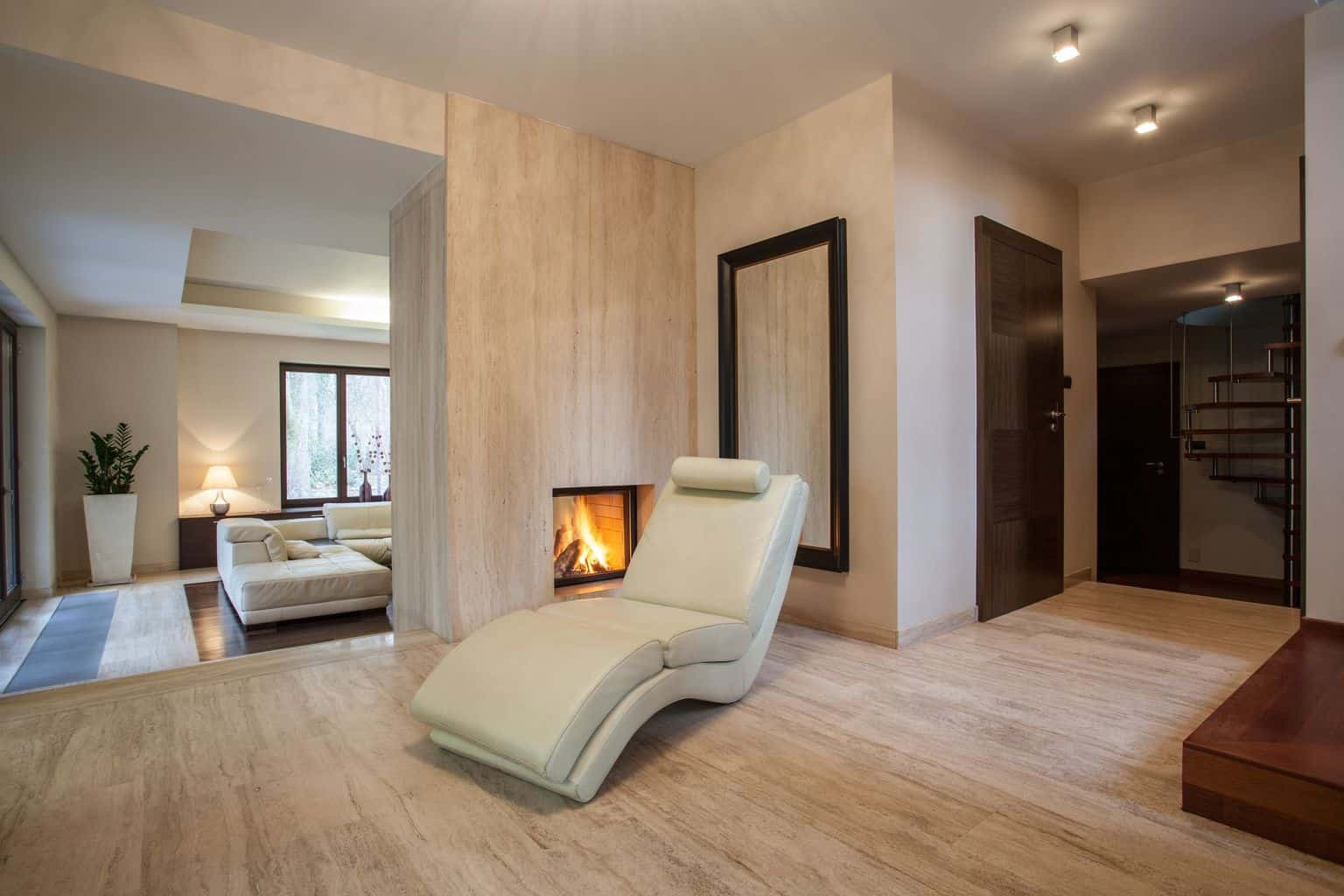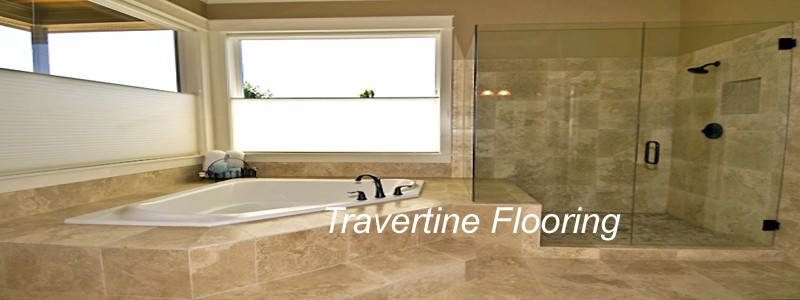Qualified Flooring is necessary for a home and what is says about the age of the home. Though there are many types of flooring, it is your responsbility to choose the consistent one for your home. Travertine flooring is there to help you acheive your goal.

Travertine flooring is not limited as it includes tile and mosaic. If you want to increase the durability of your flooring, then travertine mosaic is your only solution.
Travertine is basically a type of stone flooring which will give both durability and also beauty to your home. It is a natural sedminetary rock that belongs to the category of limestone family. Its beauty is calssified into onyx marble, Mexican onyx, Egyptian alabaster and oriental alabaster.
You may ask what is the special purpose of this flooring for various locations like home and office?
Pros & Cons Of Installing Travertine Flooring
Pros
- Various Style Options
- Easy to Install
- Long Lasting
- Beautiful Flooring Choice
Cons
- This stone may react with acidic products
- It may be slippery in wet conditions
Creation Of Travertine
Travertine stone is made when minerals are disintegrated in ground water. They are supposed to be brought to the surface by geysers, rivers and springs. It is also obtained if limestone is placed under pressure for long periods of time.

If travertine is placed under pressure for a long time, it will become marble. Travertine is better quality than limestone and marble is better than travertine.
When this travertine is supposed to udnergo the manufacturing process of travertine tile, it follows a cutting operation. The stones are getting converted into thin tiles. These tiles undergo further finishing touches to give them a smooth look.
Under the finishing are four kinds of Tile
- Polished
- Honed
- Brushed
- Tumbled
Polished tiles have a a brighter shine, since it undergoes polishing untill it is flattened and smoothed enough to catch and reflect light.
Honed tiles have a matte finish and also look flat and smooth. Brushed and tumbled tiles are textured.

The consistency of travertine is equal to other tile stone floors. It is equal to marble in that it may break and crack. In order to make it last for a long time, it has sealant added. The unsealed travertine should not be used in food preparation areas, since it will absorb any straing quickly and is very difficult to remove.
If the place is a more populated area, then travertine mosaic would be a more suitable choice. Mosaic is able to carry heavy loads in comparison with travertine tile. Travertine tile with most often come with a hardness rating of about 4 in manufacturing which is similar to marble strength.
Application In Residential Buildings
Travertine has been used for thousands of years for residential buildings. If you compare marble with travertine, travertine is easy to see and so its vast application can be seen in higher trafficked areas. Today, it is used not only for flooring but also in wall coverings.
If it is unsealed and unpolished, it may react with acids. Even a simple orange can leave a stain on the floor. For this cause it is more important to avoid unsealed flooring particularly in food preparation areas.

If you want to add flooring to your home in a timley manner, you can opt for travertine flooring, since installation of travertine flooring seems to be very easy. On the other hand, if it is polished and sealed, it will become durable and reliable. It may not be a suitable choice for bathroom flooring.
If you want to add bauty to your home, you can install this travertine. It comes in various colors like ivory, beige, walnut and gold.
Travertine Is Easy To Clean
Travertine stone flooring is very easy to clean and is said to be eco-friendly. It will be more prominent for your home as it does not absorb odors or gases. Since it is sealed, the dirt will remain in an upper layer of stone instead of staying in the ground. Therefore, it can be easily removed.

There are both pros and cons of travertine flooring and you should adjust the lifetysle and needs according to the technology. Travertine tile flooring will help you create a new look for your home. If you want to increase the durability of your flooring, then you can opt for travertine mosaic flooring. The consistency can be observed with travertine flooring. Therefore, if you think that flooring is also associated with the responsibility of adding beaty to you home, then you can choose this flooring. It has various advantages:
- It is an eco-friendly stone
- It is a very decorative stone
- It adds quality to your home
Sealed travertine flooring is more prominent for the kitchen, since it will help in removing staind easily. If you add beauty to your home, then you can choose for travertine mosaic flooring which will not only serve to beautify but also add quality to your home.

Hi Judy,
I’m not sure. Can you see this ‘film’ or is there anything that transfers to your feet? It may be that it actually does need washing, it may be just the natural roughness. It’s hard to tell without more information.
My travertine tiles just arrived. There is much more variance from tile to tile (24″ x 24″)than I expected. Maybe 1 in 4 or 5 looks like the store sample. Is this unusual?
Variance is to be expected when you are purchasing any natural material, like travertine. Part of the beauty of a natural floor is the variance. Hopefully, you will enjoy the variance.
Hi,
I just had a beige travertine installed in my kitchen, bath, and laundry area. After they installer sealed it with a low sheen penetrating sealant, the floor looks dingy and there are swipe marks on the floor from the sponge they used. I was told that there was nothing wrong with the floor. What should it look like- it is honed finish. Leah
Hi Leah,
Honed travertine can have a “matte” appearance. it is very fine and smooth. There is little gloss or no gloss at all and can be rather porous. Please keep in mind that the colors in honed travertine are not going to be as vibrant as those in polished travertine.
I am in the process of buying a home. It has about 1000 sq ft of travertine. the travertine has holes in it meaning that grout was never placed in the wholes. The home owner is telling me that the floors are sealed and that is the way they wanted them. What do you think?
Hi Larry,
Are you looking for my opinion as to whether you should replace the travertine and what some options are?
I have unsealed travertine. when and what do i seal it with. And should it be sealed before grouted? Thanks….
You should seal before grouting. I recommend Aqua Mix’N’Enrich Seal. https://theflooringlady.com/aqua_mix_enrichnseal.html
Hello, I have a 75yr old home in FL, so I would imagine that the home has settled years ago. I installed 18X18 travertine in the kitchen in May of 2008 with thin grout lines. This morning I was wiping a spill on the floor and noticed a hairline crack in the middle of the tile that ran perpendicular to the floor joist. it ran through about 5 of the tiles. It was in the middle of the floor. Then when searching around I found 3 more tiles over near the kitchen sink with the same hairline crack, I can’t feel them when I rub my hand over them, but they are there. My sub floor runs diagonal with 1″ planks. My joist are the huge old style and are approx 16″ to 18″ apart. I installed staggered Hardibacker down before the tile was installed. It seemed pretty solid and didn’t sag. Is this a common problem with travertine? I didn’t install a membrane or tar paper before I put down the hardibacker. Could this be my culprit. Should I rip it all up and start over or just wait a while and fill the tiles or replace the bad ones? Or just pretend that they aren’t there? Any input would be appreciated. Thanks
Matt, I’m not sure what’s going on with your travertine tiles. It’s not uncommon for floors to not be adequately supported and the flex eventually causes tiles and/or grout to crack. You possibly needed to either add a layer of plywood before putting the backerboard down, or add supports to the joists. You can still add the support. Those tiles weigh a lot and the least amount of bending will cause cracking.
What is below the tiled floor — unfinished basement or crawlspace, slab, or a finished basement? If it’s an unfinished space I highly recommend putting a https://theflooringlady.com/raven_industries_vapor_barrier.html ” target=”new”>vapor barrier.
I’m sure your renovated home is beautiful. I hope you can figure out what the problem is before it gets worse.
Thanks so much for your input. It is a crawl space with about 1.5′ in height over sandy dirt. I will take your advice and add some more support to the joist. There is no insulation under the floor and their is no vapor barrier either. Should the vapor barrier be stapled to the bottom of the floor boards from underneath? Or just buried under the house with some sand/or gravel covering it?
I was under the house last night and I had a friend walk on the kitchen floor. I didn’t notice any flex, but I know it just takes a little. We did have over a straight week of torrential rains recently. I never saw the cracks before this and the added moisture in the air may have made the wood a little more flexible. It is extremely dry under the house and the rain does not flow underneath it all though.
2nd question is how hard is it to bust out the 18×18 tile with out chipping the good ones next to the bad? Is there a good technique besides patience that I should know about? I may go this route after I brace up the floor a bit. I’m not quite ready to chip it all out, then add the plywood and redo the hardi. I’m glad that my kitchen is pretty small if I do have to end up doing that.
We are renovating our kitchen and have found some travertine tile we love. However, I find a lot of conflicting advice on-line about sealing vs. not sealing this tile and also issues with scratching or ‘looking dirty’. We intend to set the tile in mub over hot water radient heating. What advice would you offer as to the viability of travertine in a high trafic, high use kitchen & entry?
Hi this is a link for Bob about applying the Travertine over the Radian Flooring. It is a problem that they had and maybe you can learn from their mistake. http://www.johnbridge.com/vbulletin/showthread.php?t=15102
Hi Bob, if you are planning to install travertine in a high traffic kitchen area, then I would definitely recommend sealing it. Unsealed travertine is very reactive with acids because it is very porous. I would recommend going with either honed tiles or brushed and tumbled tiles in a kitchen area.
Hi Matt, It sounds like an excellent start! I’m guessing you live in a warm climate, thus not needing insulation. The vapor barrier that I recommend – the Raven product – would be excellent. Follow their directions, even asking them before you order it so you can get the right amount.
I have this product at my house and am loving the benefits.
The water may not stand or flow in the crawlspace, but the ground does get damp, even wet, and that moisture impacts the floor and flooring above. You really owe it to yourself, and your house, to get the moisture barrier down.
Chipping the tiles out isn’t so hard, but cleaning them from the cured grout/concrete would be next to impossible. Of course, if you are looking for a new hobby it could be a good one to tackle. It will keep you occupied a very long time. I suggest bracing from below and working with the vapor barrier as your most cost- and time-effective approach to fixing the problem.
I have several whitish spots on my travertine floor that appear to be etched areas. I did seal it but the sealer appears not to be acid proof. How can I repair these areas and what sealer should I use to keep it from happening again?
Thank you
Hi Socorro, You can hire a professional stone refinisher to repair those areas. I always recommend Aqua Mix Enrich ‘N’ Seal for use with stone floorings.
We really loved travertine and was wondering how suitable it would be to be used on the floor ?
I mean compared to marble would you allow choose travertine as your floor, we are thinking of very low maintenance as both of us work during the day.
Any advice would be much appreciated.
Thanks in advance,
Lily
We have smooth flat travertine floors in our entry and formal dining area. I love the look but we started with 2 pit holes or mini craters at move-in and now there are too many holes to count !!! Our builder told us that the floors are travetine and this happens with this natural stone. We’ve only been in our new home for 4 months and I’m scared to think what the floors will look like in a year !!!
Is this true ? Does mini craters appear naturally in travertine or is there something wrong with our floors ?
Please help!
kcl